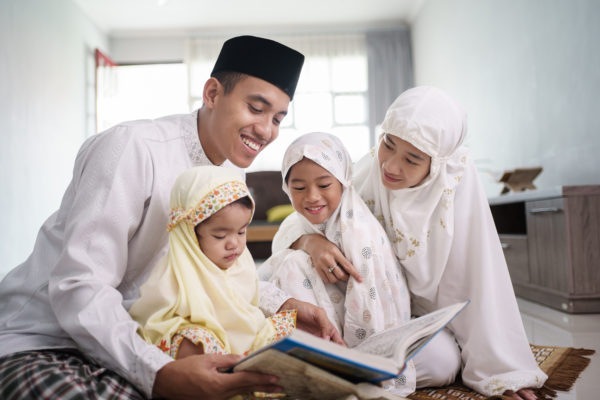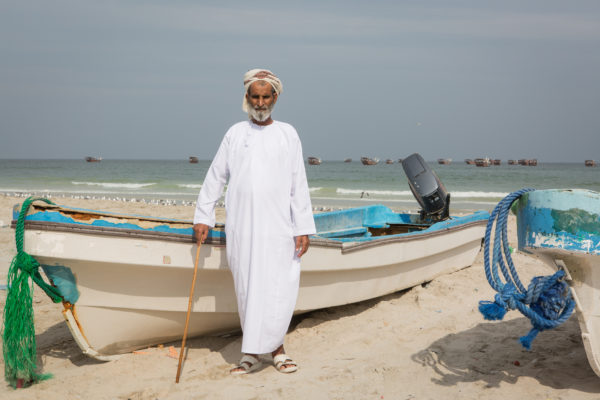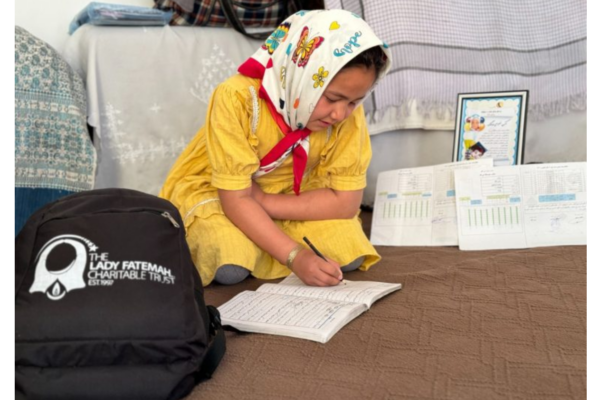While many insist on the mutual intelligibility of Dari, Farsi and Tajik and their common literary register, few Persian-language textbooks, if any, ever go beyond a brief mention of Tajik and Afghan speakers in their English-language introductions.
While many insist on the mutual intelligibility of Dari, Farsi and Tajik and their common literary register, few Persian-language textbooks, if any, ever go beyond a brief mention of Tajik and Afghan speakers in their English-language introductions.
This article was originally written for Ajam Media Collective by author Aria Fani. You can find the original article here.
The native term for the Persian language, Farsi, has gained currency in English in the latter part of the twentieth century. A number of scholars and institutions, both in Iran and abroad, have strongly objected to this usage. The term “Persian,” many argue, is loaded with such associations as Persian poetry and mysticism. Farsi on the other hand is allegedly void of any cultural or historic referent. It consequently flattens such connections and renders Persian foreign in English.
Such politics of identity is not limited to Iran as Persian also serves as the official languages of Tajikistan (known as Tajik) and Afghanistan (along with Pashto). There are other arguments against the usage of Farsi: the variants of Persian are mutually intelligible yet they are identified by three distinctive names in English: Dari, Farsi and Tajik. To reflect and honor their common linguistic register and literary heritage, one should refer to all three only by one name: Persian. What I will take to task here is the notion of “shared literary heritage,” a vague and problematic rubric that in certain contexts romanticizes the state of Persian literary production, overlooks the domination of one register over others, and erases the articulation of difference as a gesture of protest.
It is by now common knowledge that languages in the era of the nation-state are codified to fit into a national mold, primarily to invent a sense of distinction. Such project, inevitably oppositional, aims to distinguish Dari from Persian on the one hand and pit it against Pashto on the other. Not only are such tensions modern but are also mostly ahistorical to the trajectory of Persian and its interplay with other literary cultures.
Linguistic difference between Dari, Farsi and Tajik is often magnified in the service of national (and postcolonial) politics. Beyond where the language is spoken today, its literary culture echoes in such lands as Azerbaijan, India, Pakistan, Kashmir, Bangladesh, Asia minor, and the Balkans where Persian was either one of the languages of political administration, cultural importance, or literary production for many centuries. Like native speakers of Persian, they too rightly lay claim to the polycentric and cosmopolitan world of Persian literary culture.
Efforts to provincialize and arbitrarily fragment this worldly literary tradition into distinctive and separate canons, as it may be evident in their distinctive names (Dari, Farsi and Tajik), have been interrogated by different scholars, more recently in The World of Persian Literary Humanism. Less interrogated however is the rhetorical posturing of unity that fails to critically reflect on the state of Persian literary studies and pedagogy.
While many insist on the mutual intelligibility of Dari, Farsi and Tajik and their common literary register, few Persian-language textbooks, if any, ever go beyond a brief mention of Tajik and Afghan speakers in their English-language introductions. These textbooks make no efforts to cover any aspects of Afghanistan or Tajikistan. Herat and Bukhara are not mentioned alongside Shiraz and Mashhad as Persian-speaking cultural hubs. Afghan and Tajik artists are not introduced alongside their Iranian counterparts.
Such patterns are no longer due to the authors’ geographic illiteracy or lack of awareness. The introduction of the Routledge Persian Course states: “considerable overlap in written Iranian Persian (Farsi) and written Afghan Persian (Dari) is so great that Persian learners intending to use their language within a formal Afghan context will also find this coursebook of benefit.” However this gesture appears to be of marketable value only as the book chooses not to capitalise on this “considerable overlap,” particularly in its intermediate edition. Drawing from a wealth of Dari sources could have introduced students to the cultures of contemporary Afghanistan. Furthermore, showcasing different literary registers of Persian can be a productive pedagogical and cultural exercise, particularly in higher levels. We will return to the question of pedagogy.
Even if a textbook introduces an Afghan or Tajik figure, their identity is often marked as non-default, cast as the other. Persian in Use, a recent elementary textbook, has admirably incorporated a poem by Mohammad Kazem Kazemi, a Persian-language poet, literary critics and book editor from Herat. While the nationality of no other poet in the textbook is stated, Kazemi is introduced as “the Afghan Poet residing in Iran.”
If Persian indeed transcends the political borders of Iran today, as many scholarly introductions remind us time and again, why is there a pattern to mark the identity of non-Iranian Persian-language poets as the other? One also cannot but wonder would Kazemi have been incorporated in the textbook if he were still residing in Herat instead of his Iranian city of residence Mashhad? Herat and Mashhad may only be 197 miles apart (less than the distance between New York City and Boston), but the power relations that marginalize Kazemi remain wide-reaching all over Iran and beyond. Kazemi, often rendered a standalone figure, is only part of a much larger literary network that has transcended political and generational borders. After all, the history of Persian, as with many other traditions, is distinctly marked by travel and shifting centers of patronage. Kazemi is a most normative case within this historic paradigm only rendered an anomaly by Iranocentrism.
The Iranocentric disposition of Persian Studies goes above and beyond language textbooks. This fall one of my students at U.C. Berkeley returned from Dushanbe where she had spent the summer learning Persian through the Critical Language Scholarship (CLS). Throughout the program her Iranian instructors had blatantly corrected her Tajik-accented pronunciation and asked her to speak “pure Persian” (read Tehrani). I must bizarrely emphasize that she was living in Tajikistan where she stayed with a Tajik family. To her dismay, the linguistic scope of the program hardly celebrated that of her host country. Given the lack of academic ties between North American and Iranian universities, the Persian-language program in Tajikistan has offered an alternative to many students who may have otherwise wished to study in Iran. But one wonders where students such as mine, particularly interested in Tajikistan, can gain a pedagogically egalitarian education?
It goes without saying that this troubling trend is about much more than one student’s interest in Tajikistan. It is about a language program, sponsored by the U.S. government, that consciously privileges Iran and unabashedly erases Tajik, its accent and contributions to Persian literary culture while being in its territory. Sadly, this is the norm abroad and here at home.
All too often one hears of Afghan heritage students in the United States who are regularly corrected by their Iranian instructors for their Dari parlance. Such issues are almost nonexistent from conferences and publications, yet many academics still find it urgent to caution against the use of Farsi for the sake of what they deem a “proper” presentation and promotion of our cultural heritage. One may ask, who defines the contours of this shared heritage? May one speak on its behalf?
The role of the state in institutionalizing what is excluded or included in language programs (and literary canons) cannot be underscored enough. For instance, before the occupation of Afghanistan, most if not all Persian-language classes had a decidedly Iranian focus. It was only well after October 2001 that there was growing interest in Dari-language classes. Once primarily serving the U.S. military, the Dari-language program now caters to all who are interested in Afghanistan and has developed its own pedagogical design. In a similar vein, the field of Persian Studies would not be the same today if the U.S. foreign policy was focused on Central Asia, as it was after the invasion of Afghanistan, or if the Tajik government were to invest in the teaching of the Tajik language, similar to the way many Persian Gulf states have invested in Arabic and Islamic Studies.
Boxing up Persian literary culture as a national Iranian heritage is not only visible in language classrooms and textbooks, but also in translation and works of scholarship. Afghan and Tajik writers and poets are regularly excluded by anthologies of Persian literature in translation. A recent study, The World of Persian Literary Humanism, admirably critiques the Iranocentric domain of Persian Studies, but its critical posturing hardly materializes in its own literary purview.
For instance, its final chapters treat Persian’s encounter with Europe, the subsequent formation of the nation-state, and its impact on the patterns of circulation and patronage in Persian poetry. Particularly in the last chapter, the author could have included non-Iranian writers and scholars whose life is marked by traveling and traversing national borders. One such example is Mawlana Khal Mohammad Khasta who moved to Balkh from Bukhara after his birthplace fell to Tsarist Russia. In Mazar-i Sharif, he edited the literary magazine Bidar. He later settled in Kabul and anthologized the works of Persian-language poets in Afghanistan. A generation of Afghan writers and literati considers itself his student. Mu‘asirin-i sukhanwar, one of his anthologies, was published eight years before Forugh Farrokhzad’s anthology of contemporary Persian poetry, Az Nima ta ba‘d, was posthumously printed in Tehran in 1968. Unlike Farrokhzad, there is little or no scholarly work on Khasta in English.
Overall, in spite of the self-declared non-nativist framework of The World of Persian Literary Humanism, there is no mention or meaningful engagement with the Persian literary production of Afghanistan or Tajikistan in the latter part of the twentieth century. The author’s militant mission to categorically reject what he deems “nativist” and “Orientalist” modes of historiography leaves very little room to critically engage with primary sources from Afghanistan and Tajikistan (or anywhere else for that matter).
In other words, its theoretical framework hardly returns to its rightful source: Persian literary production. As such, the author’s criticism of Persian Studies’ Iranocentrism hardly transcends mere rhetoric as he goes on to enshrine canonized Iranian figures of contemporary Persian literature (and arts and cinema) while relegating Afghan and Tajik writers and literati to the status of curious endnotes.
One question remains: is there a national Tajik and Afghan canon? I certainly do not intend to reject or define its existence. But as with the question of shared literary heritage, it should be interrogated. If there is such a canon, what is it determined by? What figures disturb its literary and political project? What does this canon mean to the Afghan and Tajik people? These are questions many studies leave unaddressed.
The Iranian national canon, whatever it means to different people, is primarily studied as a continuation of the “Persian literary canon” while Afghan and Tajik literatures are treated as a divergence, and consequently lose the Persian qualifier. Perhaps it is partially due to the fact that all students of modern Persian literature in the West are trained in Iranian literary works while any knowledge of Afghan or Tajik literature is merely seen as a bonus. One can get a Ph.D. in contemporary Persian literature in Iran and abroad without ever reading a page written outside of Iran. Persian literary production outside of Iran is essentially treated as an exotic object in an uncharted terrain.
These trends, increasingly self-aware of their Iranocentrism, persist in spite of recent groundbreaking studies that return Persian literary culture to its greater geography. It is vital to lay bare any politics that aims to provincialize the worldly routes and realm of Persian. But such effort is bound to be naive at best and misguided at worst if it fails to address the prejudices of its own paradigm.
An academic posturing that insists on the unity of Dari, Farsi, and Tajik does not mirror the realities of a divided field where the pedagogical purview of Persian-language textbooks hardly goes beyond the borders of Iran while Dari- and Tajik-language textbooks are focused on their own parlance and national geography. No posturing of solidarity will automatically challenge Iran’s domination of the field of Persian Studies. As mentioned, recent works in Persian literature and pedagogy clearly point to their blind spots yet ultimately hide behind their own acknowledgement, their academic jargon. We are aware of the pain, but where is the cure?
This is a vastly neglected gap that a few scholars cannot be expected to address across so many disciplines. So where do we go from here? In the field of pedagogy, we need not look any further than what our Arabic-language colleagues have done. Variants of Persian are arguably far more homogenous than different dialects of Arabic. Yet, there have been meaningful efforts to integrate variants of spoken Arabic (ʿammiyya) side by side while there are no integrated textbooks of Persian dialects (or integrated accounts of literary history for that matter).
The third edition of Al-Kitaab, which incorporates both Levantine and Egyptian Arabic, like all textbooks, has been subject to criticism. But it has certainly added to the conversation on the pedagogical possibilities of including more of Arabic’s linguistic diversity in the classroom. In pedagogy and beyond, we can no longer romanticize and boast of the vast diversity of the Persian-speaking world while ignoring and reproducing the same power relations critiqued here. Perhaps we can take the first step by committing to an open and self-reflective conversation, one that will hold such notions as “shared literary heritage” to a critical consideration at last.
References
Farsi or Persian
- Talattof, Kamran (1997). Persian or Farsi: The Debate Continues. Iranian.com.
- Akbarzadeh, Pejman (2005). “Farsi” or “Persian?” Payvand Iran News.
- Suren-Pahlav, Shapour (2007). Persian NOT Farsi Iranian Identity Under Fire: An Argument Against the Use of the Word ‘Farsi’ for the Persian Language. The Circle of Ancient Iranian Studies.
- Talattof, Kamran (2015). Social Causes and Cultural Consequences of Replacing Persian with Farsi. Kamran Talattof (ed.), Persian Language, Literature and Culture: New Leaves, Fresh Looks. New York: Routledge.
- Yarshater, Ehsan (2015). Ventures and Adventures of the Persian Language. Kamran Talattof (ed.), Persian Language, Literature and Culture: New Leaves, Fresh Looks. New York: Routledge.
Textbooks
- Brookshaw, Dominic Parviz and Pouneh Shabani Jadidi (2010). The Routledge Introductory Persian Course: Farsi Shirin Ast.
- ______________ (2012). The Routledge Intermediate Persian Course: Farsi Shirin Ast, Book Two.
- Sedighi, Anousha (2015). Persian in Use: An Elementary Textbook of Language and Culture. Leiden University Press.
Surveys & anthologies
- Karimi-Hakkak, A. (1978). An Anthology of Modern Persian Poetry. Boulder: Westview Press.
- Kianush, Mahmud (1996). Modern Persian Poetry. Ware, Herts: Rockingham Press.
- Aslan, Reza (2011). Tablet & pen: Literary Landscapes from the Modern Middle East : a Words without Borders Anthology. New York: W.W. Norton.
- Dabashi, Hamid (2012). The World of Persian Literary Humanism. Cambridge: Harvard University Press.
Critical perspectives
- Ahmadi, Wali (2004). “Exclusionary Poetics: Approaches to the Afghan ‘Other’ in Contemporary Iranian Literary Discourse.” Iranian Studies, 37.3. pp. 407-429
- Sharma, Sunil (2010). Redrawing the Boundaries of ‘Ajam in Early Modern Persian Literary Histories. Abbas Amanat and Farzin Vejdani (ed.), Iran Facing Others: Identity Boundaries in a Historical Perspective (49-62). Palgrave Macmillan.
- Schwartz, Kevin (2014). Bāzgasht-i Adabi (Literary Return) and Persianate Literary Culture in Eighteenth and Nineteenth Century Iran, India, and Afghanistan. Unpublished doctoral dissertation, University of California, Berkeley.
- Olszewska, Z. (2015). The pearl of Dari: Poetry and personhood among young Afghans in Iran. Bloomington: Indiana University Press.





